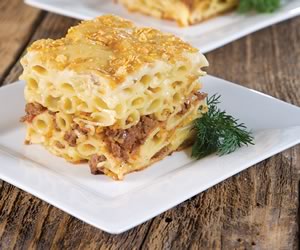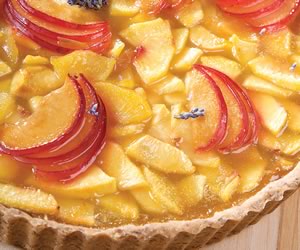What? No more ice cream?!
A mother rises to the challenge of cooking dairy-free for her family.
Imagine waking up one day to discover you must radically change the way you shop for your food, the way you prepare it, and what you can eat from that day onward.
My story revolves around my daughter, Anastasia. She was born anaphylactic to dairy products. This means that foods such as milk and cheese could put her life at risk. She was also allergic to eggs, tomatoes, olives, olive oil, sulphites – and the dog. It became my job to keep her out of harm’s way, to educate my family and myself, to read all food labels and, as Anastasia grew, to teach her that all foods are not for her.
When you think of dairy, you may think of milk, cheese and butter, but there are also the by-products of milk -– whey, whey protein (liquid and powder), modified milk ingredients, lactose and artificial flavours. Milk and milk products seem to be in almost everything that is pre-packaged. And many other foods that are served fresh can also contain traces of milk. For example, read your bread labels – most breads now contain one or more of these dairy products.
Think about what it’s like to have to avoid the dairy section to protect your son or daughter, and what it would take to change your whole way of thinking about food: the way you cook lasagna and pizza, or bake your cookies and cakes. That’s exactly what I went through when I was effectively forced to create a brand new lifestyle for us. I am thrilled that I can now share with you what I have learned over the past 10 years.
Initially I thought, “What am I going to do?” To accommodate our daughter’s diet, we stopped eating out at restaurants. We packed her special meals wherever we went. We also stopped eating any dairy in our home to avoid cross-contamination.
One of the biggest eye-openers occurred when I started reading food labels. I quickly discovered scores of other things that I also wanted to avoid – glucose, fructose, dextrose, hydrogenated products, preservatives, dyes and white refined foods, such as white flour and white sugar. What happened to healthy, natural ingredients? What about ingredients with names we can understand?
I learned that many of us really have no idea what is in our food, or where it comes from. I also found out what the names of some of those mysterious ingredients actually mean. Dealing with my daughter’s serious food allergy made me serious about controlling what my whole family eats. And, as they say, knowledge is power.
As I lived with Anastasia’s allergy, I discovered a positive side to our new lifestyle. Eating dairy-free turns out to have many health benefits. My husband’s cholesterol is now manageable without medication. We’ve both lost weight because, although we are eating more, we are not eating foods that are high in unhealthy fats. Furthermore, my skin is clearer and I feel far more energetic.
If you discover you have diabetes or a lactose intolerance, or you are diagnosed with a life-threatening disease, your doctor may suggest that you change the way you eat to improve the quality of your life. Eating dairy-free is a great supplement to a healthy lifestyle. I’ve discovered, for example, that I can taste the natural flavour of my food now that it is not coated in butter, creams and gooey cheeses.
When I talk with family and friends about living dairy-free, their most common reaction is, “What do you eat if you don’t eat dairy?” As though milk is somehow the only available food source! I laugh and say, “Eat everything you usually eat. But without dairy!”
I also advise them to look at their food more closely and start supporting producers of local fruits, vegetables and meats. It seems silly to buy apples imported from China, when tonnes of apples grow “right in our own backyard.” Have you thought about garlic, baby food, canned goods and tomatoes? Do you know how they were produced? Were they packaged safely? What about the fertilizers and pesticides that were used? Besides, supporting our communities, our farmers and our food producers ultimately supports us.
Because I cook from fresh every day, I have rewritten many old family recipes – lasagnas, pizzas, cakes, cookies and muffins, to name a few. All the recipes I have recreated are dairy-free and prepared with flavour, texture and freshness in mind.
Getting the kids involved in the preparation of any meal is a fun way to spend time with them, and provides an opportunity to talk to them about healthy foods. It’s amazing how excited kids can get when they make the connection between their food and where it comes from.
Cooking dairy-free opened my eyes to a wider variety of foods and allowed me to reconnect with a healthy, sustainable lifestyle that I can share with the kids. Now we eat so much more, read all labels, and source local, in-season foods. Anastasia’s food allergies have been a challenge, but they’ve also been a blessing in disguise.
- To find out more about food allergies, please visit anaphylaxis.ca.
- For more inspirational recipes, visit freshalicious.ca.








